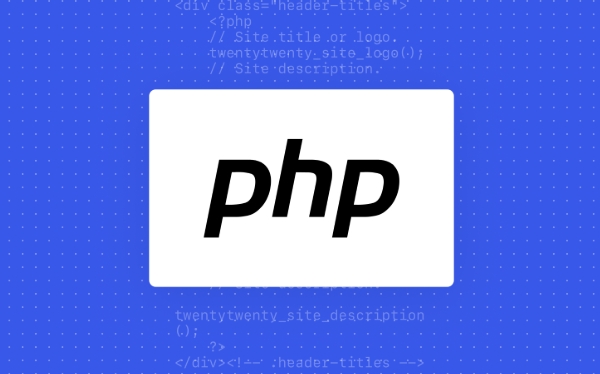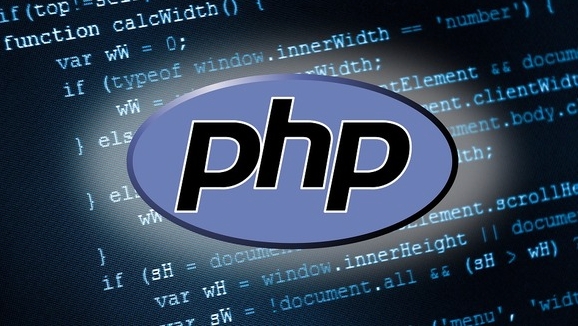The safest way to save dates to the database in PHP is: 1. Select the appropriate data type (DATETIME is suitable for long-term storage, TIMESTAMP is suitable for automatic time zone conversion); 2. Use the DateTime class to process time and the unified format is 'Ymd H:i:s'; 3. Use UTC to unify the time zone and set the time zone when connecting to MySQL. Avoid storing timestamps directly or using irregular formats to ensure queries, sorting, and cross-language compatibility.

When saving dates to the database, the most secure way in PHP is actually just a few key points: using data types, handling time zones, and unified format specifications .

Commonly used date types in MySQL are DATE , DATETIME and TIMESTAMP . When operating in PHP, just be careful not to store time randomly as a string, and there will basically be no problems.

Store with DATETIME or TIMESTAMP type
These two are the most commonly used options:
-
DATETIME: Can represent a larger range of time (1000 to 9999), suitable for long-term retention data -
TIMESTAMP: Automatically convert time zones, affected by MySQL configuration, with a smaller range (1970~2038)
If your system involves multiple time zones, or you want the database to automatically convert time zones for you, then TIMESTAMP is more suitable; otherwise, DATETIME is generally recommended, which is more stable and controllable.

Save the same format before, don't spell strings casually
In PHP, it is recommended to use DateTime class to handle time, so that errors are not prone to errors:
$date = new DateTime(); $dateStr = $date->format('Ymd H:i:s'); // The standard format can be inserted directly into DATETIME
Don't use time() directly to get an integer stored in the database, which saves space but is not convenient for querying and sorting. Unless you have a special reason, it is most convenient to use the standard date format directly.
A common mistake is that someone writes it like this:
$now = date('Y/m/d H:i:s'); // Used a slash, an error may be reported in some SQL occasions
Remember to have standard formats, use horizontal lines - and colon : , such as 'Ymd H:i:s' , which is the default recognized format by MySQL.
The time zone must be unified, don't mix it up
If the front-end users are distributed in different time zones, you need to decide:
- Is the local time or UTC saved?
- What time zone does the database store?
The general recommended practices are:
- Using UTC time unified storage in PHP
- When displayed to users, convert according to their time zone
You can set it like this:
$dt = new DateTime('now', new DateTimeZone('UTC')); // Insert the database and convert it into a string
At the same time, it is necessary to ensure that MySQL connections also use a unified time zone:
SET time_zone = ' 00:00';
Or execute SQL to set the session time zone after the connection.
Small details are easily overlooked
- Field default value : can be set to
CURRENT_TIMESTAMP, but be careful that it only takes effect onTIMESTAMP,DATETIMEdoes not support it - Automatic update time :
ON UPDATE CURRENT_TIMESTAMPThis function can only be used forTIMESTAMP, and there can only be one such field at most (old version of MySQL) - Cross-language compatibility : If your project may read and write this field in other languages ??in the future, using standard formats and UTC time can reduce the hassle
Basically that's it. Choose the type, unified format, pay attention to the time zone, and the rest is to insert and update normally.
The above is the detailed content of php best way to store date in database. For more information, please follow other related articles on the PHP Chinese website!

Hot AI Tools

Undress AI Tool
Undress images for free

Undresser.AI Undress
AI-powered app for creating realistic nude photos

AI Clothes Remover
Online AI tool for removing clothes from photos.

Clothoff.io
AI clothes remover

Video Face Swap
Swap faces in any video effortlessly with our completely free AI face swap tool!

Hot Article

Hot Tools

Notepad++7.3.1
Easy-to-use and free code editor

SublimeText3 Chinese version
Chinese version, very easy to use

Zend Studio 13.0.1
Powerful PHP integrated development environment

Dreamweaver CS6
Visual web development tools

SublimeText3 Mac version
God-level code editing software (SublimeText3)

Hot Topics
 What are some best practices for versioning a PHP-based API?
Jun 14, 2025 am 12:27 AM
What are some best practices for versioning a PHP-based API?
Jun 14, 2025 am 12:27 AM
ToversionaPHP-basedAPIeffectively,useURL-basedversioningforclarityandeaseofrouting,separateversionedcodetoavoidconflicts,deprecateoldversionswithclearcommunication,andconsidercustomheadersonlywhennecessary.StartbyplacingtheversionintheURL(e.g.,/api/v
 How do I implement authentication and authorization in PHP?
Jun 20, 2025 am 01:03 AM
How do I implement authentication and authorization in PHP?
Jun 20, 2025 am 01:03 AM
TosecurelyhandleauthenticationandauthorizationinPHP,followthesesteps:1.Alwayshashpasswordswithpassword_hash()andverifyusingpassword_verify(),usepreparedstatementstopreventSQLinjection,andstoreuserdatain$_SESSIONafterlogin.2.Implementrole-basedaccessc
 What are weak references (WeakMap) in PHP, and when might they be useful?
Jun 14, 2025 am 12:25 AM
What are weak references (WeakMap) in PHP, and when might they be useful?
Jun 14, 2025 am 12:25 AM
PHPdoesnothaveabuilt-inWeakMapbutoffersWeakReferenceforsimilarfunctionality.1.WeakReferenceallowsholdingreferenceswithoutpreventinggarbagecollection.2.Itisusefulforcaching,eventlisteners,andmetadatawithoutaffectingobjectlifecycles.3.YoucansimulateaWe
 What are the differences between procedural and object-oriented programming paradigms in PHP?
Jun 14, 2025 am 12:25 AM
What are the differences between procedural and object-oriented programming paradigms in PHP?
Jun 14, 2025 am 12:25 AM
Proceduralandobject-orientedprogramming(OOP)inPHPdiffersignificantlyinstructure,reusability,anddatahandling.1.Proceduralprogrammingusesfunctionsorganizedsequentially,suitableforsmallscripts.2.OOPorganizescodeintoclassesandobjects,modelingreal-worlden
 How can you handle file uploads securely in PHP?
Jun 19, 2025 am 01:05 AM
How can you handle file uploads securely in PHP?
Jun 19, 2025 am 01:05 AM
To safely handle file uploads in PHP, the core is to verify file types, rename files, and restrict permissions. 1. Use finfo_file() to check the real MIME type, and only specific types such as image/jpeg are allowed; 2. Use uniqid() to generate random file names and store them in non-Web root directory; 3. Limit file size through php.ini and HTML forms, and set directory permissions to 0755; 4. Use ClamAV to scan malware to enhance security. These steps effectively prevent security vulnerabilities and ensure that the file upload process is safe and reliable.
 What are the differences between == (loose comparison) and === (strict comparison) in PHP?
Jun 19, 2025 am 01:07 AM
What are the differences between == (loose comparison) and === (strict comparison) in PHP?
Jun 19, 2025 am 01:07 AM
In PHP, the main difference between == and == is the strictness of type checking. ==Type conversion will be performed before comparison, for example, 5=="5" returns true, and ===Request that the value and type are the same before true will be returned, for example, 5==="5" returns false. In usage scenarios, === is more secure and should be used first, and == is only used when type conversion is required.
 How can you interact with NoSQL databases (e.g., MongoDB, Redis) from PHP?
Jun 19, 2025 am 01:07 AM
How can you interact with NoSQL databases (e.g., MongoDB, Redis) from PHP?
Jun 19, 2025 am 01:07 AM
Yes, PHP can interact with NoSQL databases like MongoDB and Redis through specific extensions or libraries. First, use the MongoDBPHP driver (installed through PECL or Composer) to create client instances and operate databases and collections, supporting insertion, query, aggregation and other operations; second, use the Predis library or phpredis extension to connect to Redis, perform key-value settings and acquisitions, and recommend phpredis for high-performance scenarios, while Predis is convenient for rapid deployment; both are suitable for production environments and are well-documented.
 How do I perform arithmetic operations in PHP ( , -, *, /, %)?
Jun 19, 2025 pm 05:13 PM
How do I perform arithmetic operations in PHP ( , -, *, /, %)?
Jun 19, 2025 pm 05:13 PM
The methods of using basic mathematical operations in PHP are as follows: 1. Addition signs support integers and floating-point numbers, and can also be used for variables. String numbers will be automatically converted but not recommended to dependencies; 2. Subtraction signs use - signs, variables are the same, and type conversion is also applicable; 3. Multiplication signs use * signs, which are suitable for numbers and similar strings; 4. Division uses / signs, which need to avoid dividing by zero, and note that the result may be floating-point numbers; 5. Taking the modulus signs can be used to judge odd and even numbers, and when processing negative numbers, the remainder signs are consistent with the dividend. The key to using these operators correctly is to ensure that the data types are clear and the boundary situation is handled well.






